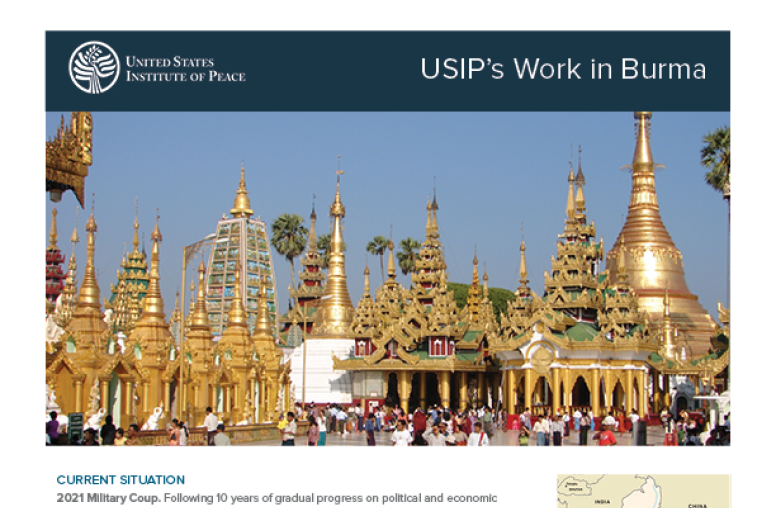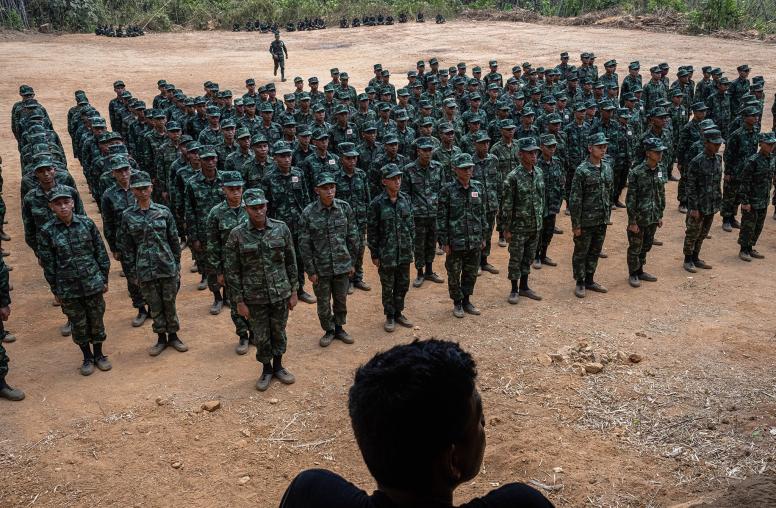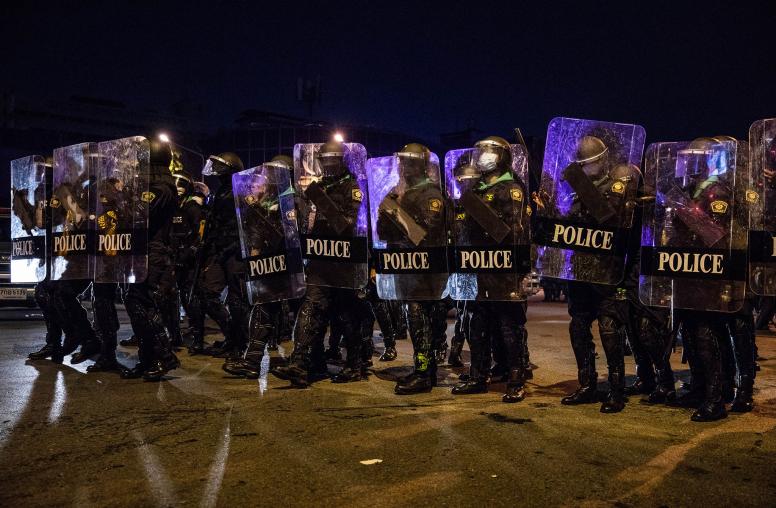How to Balance Hydropower and Local Conflict Risks
Hydropower can help meet green energy demands — but dam construction must be sustainable and equitable.
In the face of rapidly expanding solar and wind energy technology, it’s easy to forget about hydropower. Hydropower was first harnessed to turn mills and grind grain, but today it generates more electricity than any other source of renewable energy. But while dams can spur development, help manage water resources and improve access to affordable electricity, their impacts on local communities and the environment can have a dark side.

Green Growth and Dam Conflicts
For many countries, hydropower sits at the center of two converging demands: growing pressure on electric grids for new power sources and international pressure on governments to invest in cleaner energy.
The race to adapt to the impacts of climate change has driven a resurgence in new hydropower projects. Dams can serve as a source of renewable energy and help countries manage water resources and adapt to climate-related shifts like droughts or changes in precipitation patterns. And for countries in the global south with rising energy demands and untapped hydropower potential, dams offer a path to achieve energy security while avoiding dirty fossil fuels.
But despite promises, local communities are often only superficially consulted regarding the impact of dam construction. As a result, dams have collectively displaced 80 million people around the world. Those who’ve had their lives and livelihood destroyed — mostly indigenous and minority communities — are inadequately compensated, especially in countries where land tenure laws are weak.
Dams have also been an instigator for violent conflict. Repression and criminalization of environmental activists and local protestors is common, particularly against indigenous groups. Faced with impending displacement, loss of livelihood and cultural ties to land, activists from the Philippines to Brazil have been jailed, kidnapped and murdered.
But violence is not limited to isolated or direct events. The long-term health and social impacts of dams can be equally deadly. Displacement and dispossession of land is correlated with depression, and in cases like the Alto Bio Bio region of Chile, damages from construction of hydropower projects played a role in rising suicide rates among the indigenous Pehuenche population.
With more than 3,700 dams in the planning or construction phase worldwide — a majority of which are in developing economies — careful analysis must be undertaken to ensure the benefits of building dams outweigh the costs. The livelihoods of local communities and the environment must be prioritized and safeguarded to ensure hydropower is a sustainable and equitable resource that does not fuel conflict.
Myanmar: Hydropower in Crisis
Myanmar is blessed with abundant freshwater resources and incredible hydropower potential. But following the violent military coup in February 2021, nearly 15 percent of Myanmar’s energy generation capacity was taken offline, forcing the military to impose power-cuts nationwide. The country currently struggles with regular blackouts, and up to 30 percent of the population lack access to electricity altogether. With electricity demand projected to triple by 2030, hydropower is a clear candidate to improve access to energy.
But Myanmar's track record has been marred by land grabs and subsequent displacement of ethnic minority groups, despite protests. In fact, all of Myanmar’s best hydropower sites are located in contentious areas that have a history of conflict. With their current energy challenges, the military junta is even more likely to push forward with controversial energy projects — the Myitsone Dam among them.
Like many of Myanmar’s dams, the Myitsone would be funded by the Chinese state-owned company China Power Investment. Located on the Irrawaddy River in Kachin State, the dam would double Myanmar’s total hydropower output — but 90 percent of the electricity generated by the dam would be exported to China.
This fact, along with the environmental devastation and mass displacement that would accompany Myitsone’s construction, angered local activists and international NGOs, as well as sparked threats of violence from the Kachin Independence Organization.
The backlash put construction of the dam on hold in 2011. However, the Myitsone Dam project never officially closed — even after thousands of protestors tried to stop it permanently in February 2019. And after the military junta green-lighted another contentious hydropower project in Shan State this past June, there are renewed fears that the junta will resume plans for the Myitsone Dam.
Colombia: Water and Livelihoods
Like Myanmar, Colombia is keen to capitalize on hydropower’s potential. Dams currently power 70 percent of the country’s electricity needs. But Colombia’s dams have a violent history of opposition from local indigenous communities and environmental rights activists.
Meanwhile, existing water security concerns such as pollution from mining and pesticides — combined with climate change-induced precipitation anomalies, flooding and rapid glacial melt — make dams an even more concerning long-term development strategy for Colombia’s energy sector.
These concerns ring particularly true for the Ituango Hydroelectric Dam. Located on the Cauca River in the Department of Antioquia, Ituango is among South America’s largest infrastructure efforts and is set to begin operations later this year. But construction has been mired in corruption charges, and a series of failures forced thousands of people across 12 villages to evacuate during a 2018 emergency.
Social and environmental leaders in Colombia, including those that have opposed dams, have been targeted by organized armed actors through intimidation, death threats and, in some cases, assassinations. In 2020, Colombia was the most dangerous country for environmental defenders. These events have left communities strongly opposed to new projects.
Nevertheless, plans are moving ahead for the Ituango Dam as well as for dams in the “golden gate” region of the Colombian Amazon near Puerto Rico, Caquetá. This disputed territory was once dominated by the Revolutionary Armed Forces of Colombia and has a long history of armed conflict. But given its wealth of water resources, local communities are now facing the possibility of two hydroelectric plants along the Guayas River.
Companies have begun advancing some processes with the National Authority of Environmental Licenses, but local communities have received little information. Residents are demanding transparency on the projects, as the dams have the power to completely transform their lives. The Guayas River “is not only a water source but a means of transportation, economic development and even a part of our identity as a territory,” leaders from the region told USIP. Youth activists are also strongly opposed, as one noted: “If the time comes and the project is approved, there would be a strong movement of youth activism to prevent its construction.”
Ensuring Hydropower’s Long-term Sustainability
Demand for electricity is outpacing supply around the world, particularly for the 800 million people in fragile states — more than three quarters of which live without electricity entirely. But the above cases demonstrate that hydropower has a dark side. And future development must avoid catastrophic social and environmental consequences in order to be a viable electrification option.
In the run-up to COP 27, the United States must recognize the potential of hydropower as both a decarbonization option and a form of climate adaptation. But for countries that pursue projects, sustainable and equitable development must be prioritized. To ensure long-term sustainability of hydropower a few steps can be taken at the outset.
First, governments should evaluate technologies or energy options that would improve community resilience and reduce social and environmental concerns. From Pakistan to the Dominican Republic, micro-hydropower plants offer similar benefits to large scale dams but have much fewer conflict flashpoints and deliver benefits for local communities.
Second, when large-scale projects are viable, following guidance from recognized international organizations, research and consultations can reduce social friction. Since 2001, the World Commission on Dams has offered sound advice to democratize decisions around hydropower projects, improve transparency and prevent social conflicts. Yet governments and companies alike rarely abide by the guidance that would improve the long-term sustainability of dams. As countries scale up renewable energy and look towards large hydropower, they must:
- Connect and leverage academics, civil society and affected populations to jointly produce knowledge and roadmaps for sustainable hydropower.
- Engage meaningfully and transparently with local stakeholders to ensure free, prior and informed consent is received — including from communities residing downstream that will be affected by the dam.
- Develop clear and adequate compensation mechanisms for local residents prior to beginning dam construction.
- Develop a pathway to secure communities post-development and ensure measures are taken to reduce long-term livelihood impacts such as water availability and fish stocks.
- Carefully evaluate the impact of climate change on dams to avoid projects like those in the Amazon Basin that run far below their expected capacity due to climate variability.
Chris Collins is a research assistant for USIP’s Climate, Environment and Conflict program.
Laura Leiva is a senior project assistant for USIP’s Latin America regional program.



